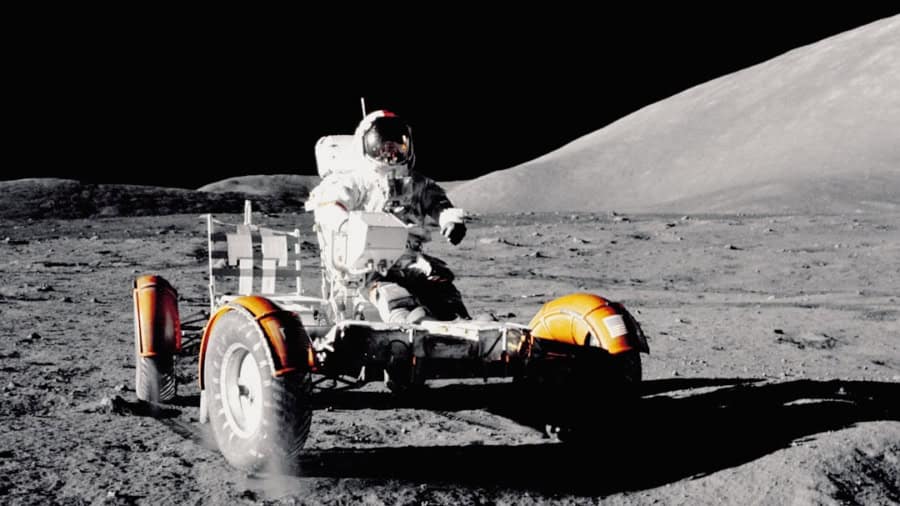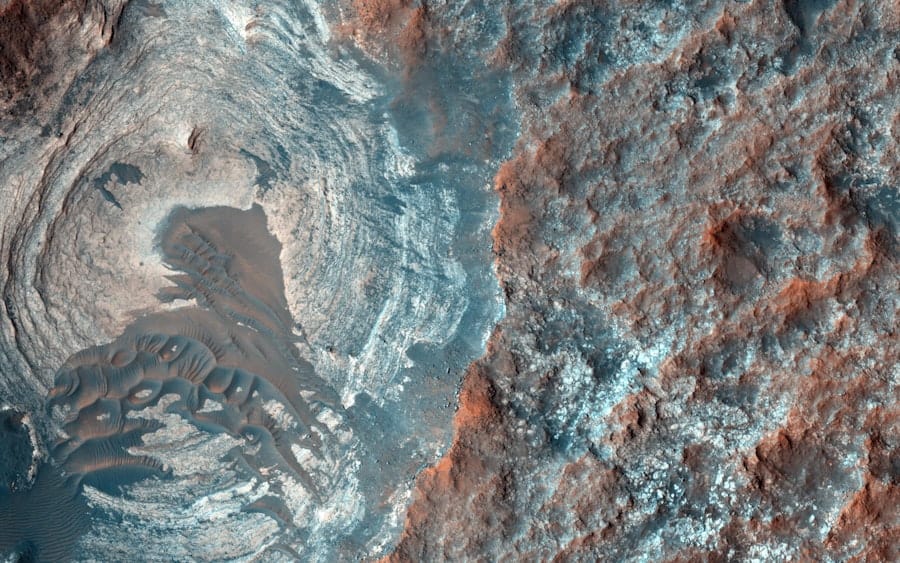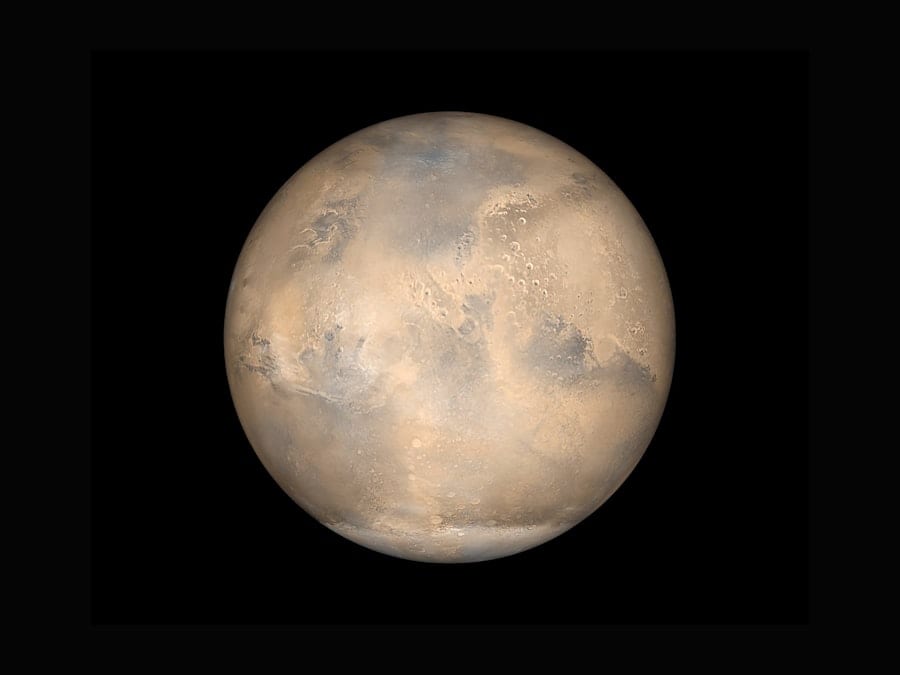The exploration of Mars has captivated humanity for decades, driven by the quest to understand our neighboring planet and the potential for future human colonization. As missions to Mars become more frequent and sophisticated, the need for accurate weather prediction has emerged as a critical component of successful exploration. Traditional meteorological methods, while effective on Earth, face significant challenges in the Martian environment.
This is where artificial intelligence (AI) steps in, offering innovative solutions to analyze and predict weather patterns on Mars. By leveraging vast amounts of data collected from orbiters, landers, and rovers, AI can enhance our understanding of Martian meteorology, providing insights that are crucial for mission planning and execution. AI weather prediction on Mars involves the integration of machine learning algorithms with atmospheric data to create models that can forecast weather conditions.
These models are designed to process complex datasets that include temperature fluctuations, wind patterns, dust storms, and other atmospheric phenomena unique to Mars. The ability to predict these conditions accurately is essential not only for the safety of robotic missions but also for future human expeditions. As we stand on the brink of a new era in space exploration, the role of AI in weather prediction is becoming increasingly vital, promising to transform how we approach the challenges of Martian exploration.
Key Takeaways
- AI is being used to predict weather on Mars, a crucial factor for future missions to the planet.
- AI plays a key role in analyzing the vast amount of data collected from Martian weather observations.
- Challenges and limitations exist in using AI for weather prediction on Mars, including the need for accurate data and the unpredictable nature of the Martian climate.
- Accurate weather prediction is essential for the success and safety of future Mars missions, making AI an important tool for exploration.
- AI weather prediction on Mars is compared with Earth-based methods, highlighting the unique challenges and differences in predicting weather on the two planets.
The Role of AI in Analyzing Martian Weather Data
AI plays a pivotal role in analyzing the vast and intricate datasets generated by Martian missions. The Martian atmosphere is thin and composed primarily of carbon dioxide, with temperatures that can plummet to minus 125 degrees Celsius at the poles during winter. This extreme environment presents unique challenges for data collection and interpretation.
AI algorithms can sift through this data more efficiently than traditional methods, identifying patterns and anomalies that may not be immediately apparent to human researchers. For instance, machine learning techniques can be employed to analyze historical weather data from missions like NASA’s Mars Reconnaissance Orbiter (MRO) and the Curiosity rover, allowing scientists to develop predictive models based on past weather events. One of the most significant advantages of using AI in this context is its ability to adapt and improve over time.
As more data becomes available from ongoing missions, AI systems can refine their predictions by learning from new information. This iterative process enhances the accuracy of weather forecasts, enabling mission planners to make informed decisions regarding landing sites, operational timelines, and resource allocation. For example, during the planning stages of the Perseverance rover’s mission, AI-driven models were utilized to assess potential landing zones based on predicted weather conditions, ensuring that the rover would be deployed in an area with favorable atmospheric conditions.
Challenges and Limitations of AI Weather Prediction on Mars
Despite its potential, AI weather prediction on Mars is not without its challenges and limitations. One significant hurdle is the scarcity of comprehensive data. While missions like MRO and Curiosity have provided valuable insights into Martian weather patterns, the dataset remains limited compared to what is available for Earth.
This lack of extensive historical data can hinder the development of robust predictive models. AI algorithms thrive on large datasets; without sufficient information, their ability to make accurate predictions may be compromised. Moreover, the unpredictable nature of Martian weather adds another layer of complexity.
Dust storms can arise suddenly and cover vast areas of the planet, obscuring visibility and affecting temperature readings. These storms can last for weeks or even months, making it difficult for AI models to account for such variability. Additionally, the Martian atmosphere exhibits seasonal changes that can influence weather patterns in ways that are not yet fully understood.
As a result, while AI can enhance our predictive capabilities, it cannot eliminate uncertainty entirely. Researchers must remain cautious about over-relying on AI-generated forecasts without corroborating them with other forms of analysis.
Importance of Accurate Weather Prediction for Future Mars Missions
Accurate weather prediction is paramount for the success of future Mars missions, particularly those involving human exploration. As we look toward sending astronauts to Mars, understanding the planet’s weather becomes critical for ensuring their safety and mission success. For instance, knowing when dust storms are likely to occur can help mission planners schedule activities accordingly, minimizing risks associated with reduced visibility and equipment malfunctions.
Furthermore, accurate temperature forecasts are essential for protecting both human life and sensitive scientific instruments from extreme conditions. In addition to safety considerations, accurate weather predictions can significantly impact mission efficiency and resource management. For example, if a mission team can predict a period of favorable weather conditions, they can optimize their operations to maximize scientific output during that time.
This could involve scheduling rover movements or experiments when conditions are most conducive to success. Moreover, understanding seasonal weather patterns can inform decisions about when to deploy specific instruments or conduct particular experiments, ultimately enhancing the overall effectiveness of Mars exploration efforts.
Comparison of AI Weather Prediction on Mars with Earth-based Methods
When comparing AI weather prediction on Mars with Earth-based methods, several key differences emerge due to the distinct characteristics of each planet’s atmosphere. On Earth, meteorologists rely on a wealth of data collected from satellites, ground stations, and ocean buoys to create highly detailed weather models. These models benefit from decades of historical data and advanced computational techniques that allow for real-time updates and high-resolution forecasts.
In contrast, Martian weather prediction is hampered by limited data sources and a less comprehensive understanding of atmospheric dynamics. AI methods used for Martian weather prediction often draw inspiration from Earth-based techniques but must be adapted to account for the unique challenges posed by Mars’ environment. For instance, while Earth-based models may incorporate a wide range of variables such as humidity and ocean currents, Martian models focus primarily on temperature variations, wind speeds, and dust activity.
Additionally, the algorithms used must be tailored to handle the sparse data available from Martian missions effectively. Despite these differences, advancements in AI technology continue to bridge the gap between Earth-based meteorology and Martian atmospheric science.
Future Implications of AI Weather Prediction for Mars Exploration
The future implications of AI weather prediction for Mars exploration are profound and far-reaching. As we continue to develop more sophisticated AI algorithms and gather additional data from ongoing missions, our ability to predict Martian weather will improve significantly. This advancement will not only enhance robotic missions but also pave the way for human exploration by providing critical information needed for safe landings and surface operations.
Understanding seasonal variations in temperature and atmospheric conditions will inform decisions about where to build habitats and how to design life support systems that can withstand Martian extremes. Additionally, as we explore potential terraforming strategies or long-term colonization efforts, AI-driven weather models will be essential for assessing the feasibility of such initiatives.
Ethical and Environmental Considerations in AI Weather Prediction on Mars
As with any technological advancement, ethical and environmental considerations must be taken into account when implementing AI weather prediction systems on Mars. One primary concern is the potential impact of human activities on the Martian environment. As we deploy more robotic missions and eventually send humans to Mars, it is crucial to ensure that our actions do not inadvertently harm the planet’s delicate ecosystem or interfere with ongoing scientific research.
Furthermore, there are ethical implications surrounding data collection and usage. The deployment of AI systems requires careful consideration of how data is gathered and analyzed. Transparency in algorithm development is essential to ensure that predictions are reliable and unbiased.
Researchers must also consider how their findings are communicated to the public and policymakers, as misinformation could lead to misguided decisions regarding future missions or resource allocation.
The Potential Impact of AI Weather Prediction on Mars Exploration
The integration of AI into weather prediction for Mars represents a significant leap forward in our ability to explore and understand our neighboring planet. By harnessing advanced algorithms to analyze complex datasets, we can enhance our predictive capabilities and make informed decisions that will shape the future of Martian exploration. As we continue to push the boundaries of what is possible in space exploration, accurate weather forecasting will be an indispensable tool in ensuring mission success and safeguarding human life.
The potential impact of AI-driven weather prediction extends beyond immediate mission planning; it lays the groundwork for long-term human presence on Mars. As we envision a future where humans live and work on another planet, understanding Martian weather will be crucial for developing sustainable habitats and resource management strategies. The journey toward colonizing Mars is fraught with challenges, but with the aid of AI technology in weather prediction, we are better equipped than ever to navigate these obstacles and unlock the mysteries of the Red Planet.
In a related article, What is Conversational Commerce?, explores the growing trend of using AI-powered chatbots and virtual assistants to enhance the shopping experience for consumers. This technology allows for more personalized interactions and streamlined transactions, ultimately revolutionizing the way we shop online. Just as AI models are revolutionizing weather predictions on Mars, conversational commerce is transforming the way we engage with e-commerce platforms.
FAQs
What is the purpose of using AI models to predict weather patterns on Mars?
Using AI models to predict weather patterns on Mars is crucial for future missions to the planet. It helps scientists and engineers understand the atmospheric conditions on Mars, which is essential for planning and executing successful missions.
How do AI models predict weather patterns on Mars?
AI models use data collected from various sources, such as orbiters, landers, and rovers, to analyze and predict weather patterns on Mars. These models take into account factors such as temperature, pressure, wind speed, and dust storms to make accurate predictions.
What are the benefits of using AI models for predicting weather on Mars?
Using AI models for predicting weather on Mars allows for more accurate and reliable forecasts, which is essential for planning missions and ensuring the safety of spacecraft and crew. It also helps scientists better understand the Martian climate and its potential impact on future exploration.
How accurate are AI models in predicting weather patterns on Mars?
AI models have shown promising accuracy in predicting weather patterns on Mars. By continuously improving and updating these models with new data, scientists can further enhance their accuracy and reliability for future missions.
What are the challenges of predicting weather patterns on Mars using AI models?
Challenges in predicting weather patterns on Mars using AI models include the limited amount of data available, the complexity of Martian atmospheric conditions, and the need for continuous updates and improvements to the models. Scientists are actively working to address these challenges to improve the accuracy of predictions.



